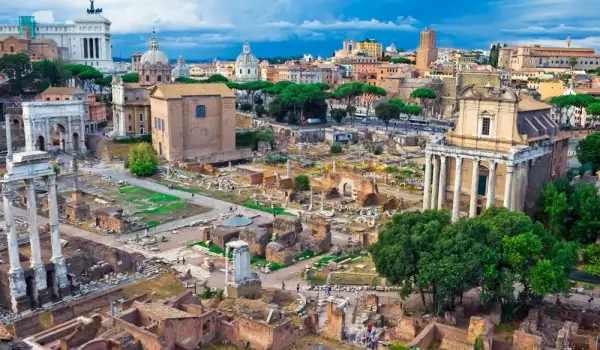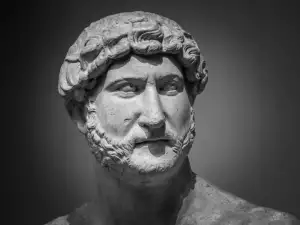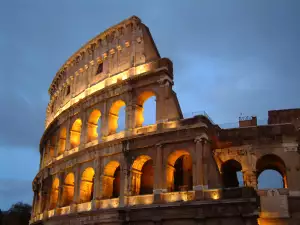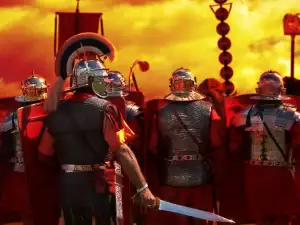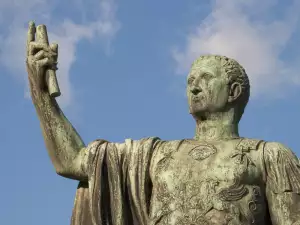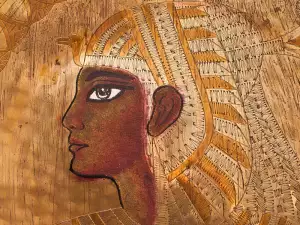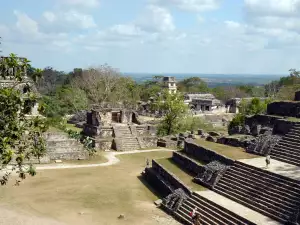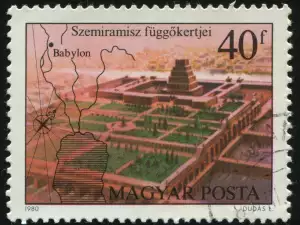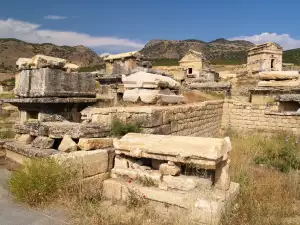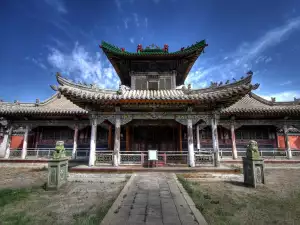The Roman Empire is considered one of the greatest state entities that ever existed on Earth. It managed to unite almost all the great civilizations of the world under a single rule, taking advantage of their achievements and culture. Ancient Rome was considered an emanation of the ancient world and represented an ideal to which a number of empires aspired in the following centuries. The masters of the French Empire called themselves rulers of Rome, the German emperors called their country the Holy Roman Empire, the tsars of Russia said that their country was the Third Rome.
Everything started in the eighth century BC. Ancient Rome grew from a small city in central Italy on the Tiber River to an empire that at its height encompassed most of continental Europe, Great Britain, much of western Asia, North Africa and the Mediterranean islands.
Among the many legacies of the Roman reign are the widespread use of the Romance languages (Italian, French, Spanish, Portuguese, and Romanian) derived from Latin, the modern Western alphabet and calendar and the emergence of Christianity as a major world religion.
After 450 years as a republic, Rome became an empire after the rise and fall of Julius Caesar in the first century BC. With the long and triumphant reign of the first emperor Augustus, a golden age of peace and prosperity began. The decline and fall of the empire in the fifth century AD. is one of the most dramatic implosions in the history of human civilization.
According to legend, Ancient Rome was founded by the brothers Romulus and Remus, twins of Mars, the god of war. Left to drown in a basket in the Tiber by King Amylus of the nearby city of Alba Longa, they were rescued and raised by the Capitoline She-Wolf. When they grew up, they defeated the king. They founded their own city, which they ruled - Rome, in 753 BC. After killing his brother, Romulus became the first Roman king.
The truth, of course, is a little different. According to the researchers, the small settlements of the Latins inhabiting central Italy began to unite in order to resist the threat coming from the north - the Kingdom of the Etruscans. This is how Rome was founded in the 8th century BC. The kings ruled in it. For their bicentennial settlement, they managed to maintain their independence and unite the Lazio region.
The era of Ancient Rome as a monarchy ended in 509 BC. with the overthrow of its seventh king, Lucius Tarquinius Superbus, whom the ancient historians represent as cruel and tyrannical, in comparison with his benevolent predecessors. According to legend, his son raped the virtuous noblewoman Lucretia. This caused a popular uprising that overthrew the kings and established the republic or res publica - property of the people.
The power of the monarch passed to two annually elected magistrates, called consuls. They were also chiefs of the army. The magistrates, though elected by the people, were mostly elected by the Senate, which was dominated by the patricians or the descendants of the original senators from the time of Romulus. Politics in the early republic was marked by a long struggle between the patricians and the plebeians (commoners), who eventually achieved some political power through years of concessions from the patricians, including their political organs, the tribunes, who could initiate or veto the legislation.
In 450 BC the first Roman code of laws was created. It was inscribed on 12 bronze tablets, known as the Twelve Tables, and publicly displayed in the Roman Forum. These laws involved matters of judicial procedure, civil rights, and property rights, and provided the basis for all future Roman civil law. Around 300 BC real political power in Rome was already concentrated in the Senate, which at that time included only patricians and wealthy plebeian families.
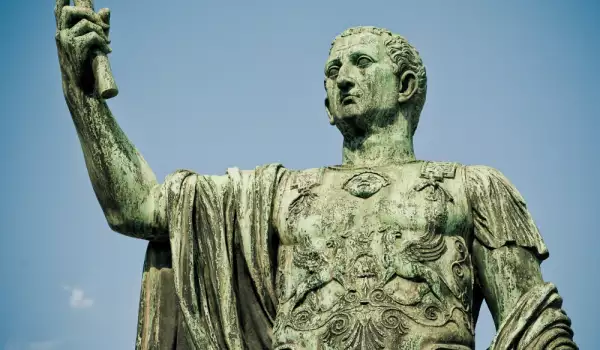
Relatively at that time, the expansion of Ancient Rome began. At first, the Romans managed to push the Etruscans out of central Italy and subsequently to conquer their entire kingdom in the northern regions of the peninsula.
In 390 BC the Gauls managed to burn Rome, but the state recovered under the military hero Camillus, who gained control of the entire Italian peninsula in 264 BC. Rome then fought a series of wars known as the Punic Wars with Carthage, a powerful city-state in North Africa. The first two Punic Wars ended with Rome in complete control of Sicily, the western Mediterranean and much of Spain. In the Third Punic War (149-164 BC), the Romans conquered and destroyed the city of Carthage and sold the surviving inhabitants into slavery, making part of northern Africa a Roman province. At the same time, Rome extended its influence to the east, defeating the Macedonian king Philip V in the Macedonian Wars and turning his kingdom into another Roman province. Thus, within 100 years, from a small city-state, Rome turned into a city an austere empire, with which all the empires of Antiquity in the east and west began to conform.
Rome's military conquests led directly to its cultural growth as a society, as the Romans benefited from contact with such advanced cultures as the Greeks. The Romans adopted and developed much of Greek art, philosophy, and religion.
The complex political institutions of Ancient Rome began to crumble under the weight of the growing empire, leading to an era of internal turmoil and violence. The gap between rich and poor widened as wealthy landowners pushed small farmers out of public lands, while access to government was increasingly restricted to the more privileged classes. Attempts to address these social problems, such as the reform movements of Tiberius and Gaius Gracchus (133 BC and 123-22 BC respectively), ended in the death of the reformers at the hands of their opponents.
A period of civil wars began. In the various parts of the empire, which by the 60s BC. already covered a large part of Spain, Italy, the Balkan Peninsula, Asia Minor, strong military leaders began to rise, each of whom aspired to dominance in the state.
One of them was Pompeius. He served briefly as consul before conducting successful military campaigns against pirates in the Mediterranean and the forces of King Mithridates of Pontus in Asia. In the same period, Marcus Tullius Cicero also rose, elected consul in 63 BC, and earned a reputation as one of the greatest orators of Ancient Rome.
When the victorious Pompey returned to Rome, he formed an uneasy alliance, known as the First Triumvirate, with the wealthy Marcus Licinius Crassus (who suppressed the slave revolt led by Spartacus in 71 BC) and another rising star in Roman politics: Gaius Julius Caesar. After winning military glory in Spain, Caesar returned to Rome to compete for the consulship in 59 BC. From his alliance with Pompey and Crassus, Caesar obtained the governorship of three rich provinces in Gaul. He then set out to conquer the rest of the region for Rome.
After Pompey's wife Julia (Caesar's daughter) died in AD 54 and Crassus was killed in battle against Parthia (present-day Iran) the following year, the triumvirate collapsed. Pompey became sole consul of Rome. Caesar's military glory in Gaul and his growing wealth overshadowed him. This inevitably led to opposition. In 49 BC Caesar and one of his legions crossed the Rubicon River on the border between Italy and the Cisalpine region. Caesar's invasion of Italy sparked a civil war, which Caesar won and declared himself dictator for life of Rome. The events unfolded in 45 BC.
Just a year later, however, Caesar was assassinated by a group of enemies (led by the republican nobles Marcus Junius Brutus and Gaius Cassius). The consul Mark Antony and Caesar's successor Octavian joined forces to crush Brutus and Cassius and share power in Rome with the ex-consul Lepidus in the so-called Second Triumvirate – with Octavian ruling the western provinces, Antony in the east and Lapidus in Africa. However, the joint rule soon collapsed and a new civil war broke out. Octavian defeated the forces of Antony and the Egyptian queen Cleopatra (his ally and lover). They both committed suicide, and Octavian placed wealthy Egypt under the rule of Rome and soon became sole master of the empire.
To avoid Caesar's fate, he restored the political institutions of the Roman Republic while actually retaining all of his power. So in 27 BC Octavian received the title of Augustus, becoming the first Roman emperor.

Octavian Augustus brought peace to the Roman Empire after nearly a century of strife and corruption. He ushered in the Pax Romana period – two full centuries of peace and prosperity. He introduced various social reforms, won numerous military victories, and allowed Roman literature, art, architecture, and religion to flourish. Augustus ruled for 56 years, supported by his large army and a growing cult of devotion to the emperor. When he died, the Senate elevated Augustus to the status of a god, beginning a long tradition of deifying popular emperors.
The dynasty of Augustus, which continued with the unpopular Tiberius (14-37), the bloodthirsty and unstable Caligula (37-41), and Claudius (41-54), is best remembered for the conquest of Great Britain by the army. The line ended with Nero (54-68), whose excesses drained the Roman treasury and led to his downfall and eventual suicide. Four emperors occupied the throne in the tumultuous year after Nero's death. The fourth is Vespasian (69-79). He and his successors, Titus and Domitian, known as the Flavians, attempted to moderate the excesses of the Roman court, restore the authority of the Senate, and promote the public welfare.
The Golden Years of Ancient Rome continued with the emperors Trajan, Hadrian, Antoninus Pius and Marcus Aurelius. However, the latter faced the invasion of the Germans from the north. He died near today's Vienna, having broken the tradition of emperors being elected by the Senate, placing his son Commodus on the throne.
The decadence and incompetence of Commodus (180-192) brought a disappointing end to the golden age of Roman emperors. His death at the hands of his own servants sparked another period of civil war, from which Lucius Septimius Severus (193-211) emerged victorious. During the third century, Rome suffered from a cycle of almost constant conflict. A total of 22 emperors occupied the throne, many of them met with violent deaths at the hands of the very people who had raised them to power. Meanwhile, threats from outside were draining the empire and draining its riches.
The reign of Diocletian (284-305) temporarily restored peace and prosperity to Rome, but at a high cost to the unity of the empire. Diocletian divided the power over the huge state into two - the Western Roman Empire and the Eastern Roman Empire (later known as Byzantium).
After the death of Diocletian, peace again broke down. Constantine came to power. He united the two parts of the divided empire, but moved the capital from Rome to Byzantium, a city which was named Constantinople in his honor. At the Council of Nicaea in 325, Constantine made Christianity (once an obscure Jewish sect) the official religion of Rome.
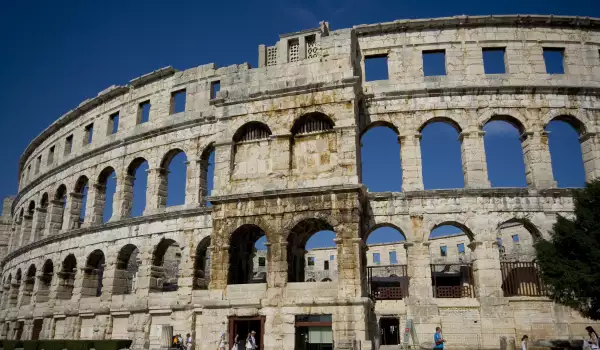
Shortly after the death of Constantine in 395, the Roman Empire finally disintegrated into two separate states - Western with Rome as its capital and Eastern with Constantinople as its capital. It was then that the event that led to the end of Rome and the Age of Antiquity began - The Great Migration.
New tribes and people entered Europe. The most terrible of them were the Huns, who created a vast empire from France to the Ural Mountains and ravaged the dominions of Ancient Rome.
The Germanic tribes became increasingly aggressive and soon began to tear apart the dominions of the Western Roman Empire. The English and Saxons conquered Britain, the Franks – Gaul, the Visigoths – Spain, the Vandals – North Africa.
Constant external dangers and civil wars exhausted the state. Even the once invincible Rome was sacked. First the Goths did this in 410, and then the Vandals in 455.
The end of the Western Roman Empire came in 476. Then the German mercenary Odoacer overthrew the last Roman emperor Flavius Romulus Augustus and proclaimed himself king of Italy. The symbols of imperial power were sent to the Eastern Roman Emperor, and so the power of Ancient Rome, which had ruled the Old World for 1, 000 years, disappeared.
The Eastern Roman Empire lasted longer. It stabilized and survived for another 1, 000 years until 1453, when the Ottoman Turks took over Constantinople, destroying the last remnants of the Roman Empire.
